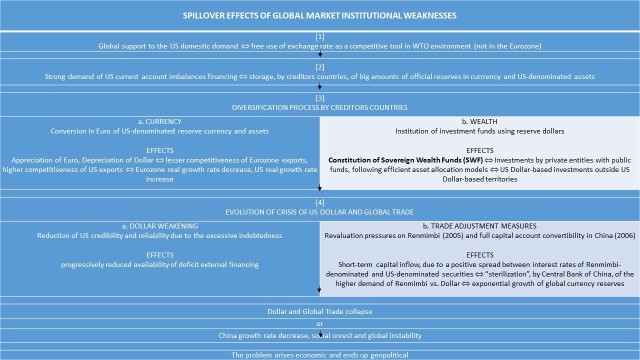In November 2014, Standard&Poor’s (S&P) published a proposal of new criteria for assessing credit risk of “Investment Holding Companies” (IHCs), defined as “firms holding equity stakes across at least three sectors”, as part of a bigger focus onhow to evaluate the liquidity risk in the current depression.
The new framework grades IHCs’ asset liquidity by splitting their main countries of operation into four baskets. The split is based on a 30-year track record of those nations’ share market swings, taking into account of (1) the lack of direct ownership of assets by the IHC, (2) the challenges the IHC face when selling in illiquid markets and (3) the volatility of assets the IHC hold.
Singapore’s Sovereign Wealth Fund (SWF), Temasek Holdings has negatively reacted to this proposal, that groups Singapore -with a AAA rating for the last 20 years- and riskier nations. Singapore, in fact, falls into the third basket with Hong Kong, Saudi Arabia and Cyprus, but also with Greece and Jamaica.
The proposed industry classification could see -according to Temasek- a capping of IHCs’ “anchor ratings”, which help determine stand-alone scores at levels that, positively or negatively, don’t reflect the individual firms’ ability to pay their debt. S&P, in fact, assigns an “extremely high likelihood of extraordinary government support” to Singapore.
Temasek is a AAA-rated investment firm which managed US$165 billion of assets (as of March 2014). Its USD-denominated bonds, due in 2019, yielded 39 basis points more than US Treasuries (on current month) and its CDS were at 38.7, compared with 35.5 for Australia. According to its last annual report published in July 2014, Temasek had 31 per cent of its assets in Singapore, 41 per cent in the rest of Asia stood and 24 per cent those in North America, Europe, Australia and New Zealand. About 70 per cent of its assets were listed. The firm’s biggest holdings include stakes in Singapore Telecommunications Ltd (52 per cent, valued at USD 25bn); China Construction Bank Corp. (6 per cent, valued at USD 11.6bn), and DBS Group Holdings Ltd (29 per cent, valued at USD 10.4bn).
Temasek Holdings has come down hard, then, saying that the rules – if implemented – will get to “serious concerns”. In a 29-page response to the proposed changes, Temasek took issue with how the framework departs from:
- the principle that credit ratings should be based on the individual company’s underlying credit quality;
- individual companies should be assessed using credit metrics across business and financial aspects:
- the business aspects of an IHC should include the resilience and credit quality of its portfolio, as well as the management and governance structure of the IHC;
- the financial aspects should include portfolio liquidity, cash flow, debt maturity profile, sources of liquidity, overall funding and capital structure, and ability to meet payment obligations as and when they fall due.
According to the Temasek spokesperson, Stephen Forshaw, S&P seems to be confusing volatility with liquidity (“they would argue that a market in New Zealand is less volatile than Singapore. That may well be the case, but it should not be about volatility, it should be about liquidity.”)
Several analysts brushed off any potential negative impact on Singapore’s status as a financial hub, saying Temasek’s reputation do not ride solely on credit ratings. According to a CIMB economist, Song Seng Wun, “people will not take it seriously if Temasek is grouped with parties like Jamaica and Greece. Singapore has a good track record in repayment; the ratings merely reinforce the perception that people have of it. Singapore won’t be in Greece’s position unless the way the country is managed is fundamentally changed”.
The rating agencies have been recommending placing at least 10-15 percent of government revenues in a buffer fund of some sort. Since credit ratings directly affect borrowing costs, the governments have had a large economic incentive to do what the rating agencies want them to do. Now this clash radically changes the way in which SWFs have so far addressed to the rating agencies, marking the transition for the SWFs from “governmental entities” to “private corporation”.
Since S&P’s Ratings Services declined to comment on Temasek’s feedback, the final version of the S&P’s criteria will help to understand how, in the future, the weight of the SWFs will rule also the decisions of the rating agencies.
This post has been also published on LinkedIn.
DISCLAIMER: Any views or opinions presented here are solely those of the author and do not represent any official position of the Italian Ministry of Foreign Affairs and International Cooperation.


You must be logged in to post a comment.